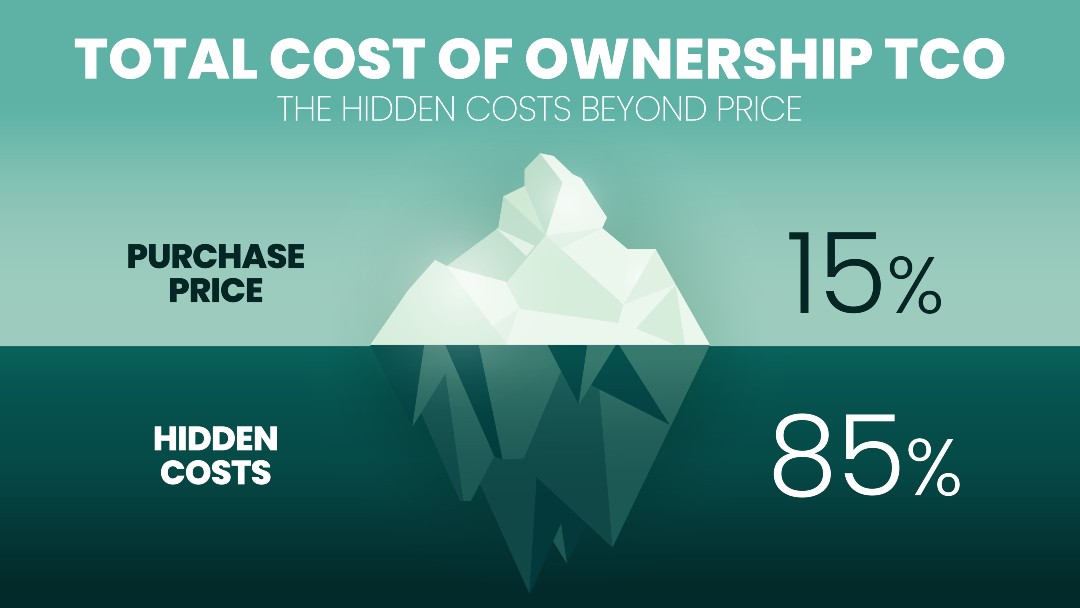Many IT enterprises do not have a formal process to optimise IT spending to maximise business value. In most enterprises, cost-cutting occurs as a reactive response to a crisis. Such ad-hoc cost-cutting exercises do not consider the unintended consequences of the cutting. Such cuts almost always impact the business.
Here are seven golden rules to cut costs and optimise IT costs.
RULE 1: Have a plan for cost-cutting
As the economy goes for a rollercoaster ride with ups and downs, most enterprises resort to cost-cuttings to overcome the downs.
But unstructured or knee-jerk cost-cutting is not sustainable and may even be counterproductive. Often, such knee-jerk cost-cutting has unintended implications beyond what is visible. Today, most enterprise applications and systems have interlinkages. Cuts in one place may have unintended consequences elsewhere. The cut expenses soon make their way back to mitigate the unintended consequences. Even otherwise, reactive cost-cutting degrades employee morale. To overcome such a state,
- Conduct a business impact assessment before cost-cutting. Consider the long-term implications of short-term cuts.
- Identify dependencies that impact investments and priorities. Place all dependencies in the business context.
- Quantify the impact of cost-cutting on business outcomes rather than on work impact. Cut only if there is a benefit.
- Focus on cash flows for short-term cost controls. Preserving cash matters more than book-based cost-cutting to tide over a short-term crisis.
- Identify risks for all eventualities. Accept risk rather than ignore it. Assess and account for risk using models such as Value at Risk (VaR). Monetise risk wherever possible.
RULE 2: Consider the total cost of ownership (TCO)
Many enterprises focus only on visible costs and remain oblivious to the total cost. The total cost of an IT project or deliverable is much more than the upfront costs.
- Calculate lifecycle costs when comparing products or considering cost viability. For instance, the IT team may install low-priced software. But they may end up spending more on annual licences. The software with a higher upfront cost may cost less when considering the TCO.
- Timeliness is more important than perfection when modelling cost. Consumption-based accounting offers accuracy. But cost allocation based on estimates and averages is quicker, easier, and less expensive to determine. The extra time and effort for accuracy may inflate costs with no added value.
- Project managers need multiple views of the same costs to cut expenses since stakeholders perceive the same cost differently. The four major views are application, asset, business and technical. For instance, detailed technical views do not answer consumer or management-focused questions. Many enterprises fail to capture a business view angle of the costs.
RULE 3: Maximise business outcomes
Cost optimisation need not always mean reducing costs. Optimisation means getting the biggest bank for the buck, regardless of the amount spent.
- Ensure strategic alignment of IT costs with business goals and objectives. Spend on projects that deliver the best business outcomes.
- Have a priority list of projects ready. Define the deliverables to the extent it syncs with enterprise missions and outcomes. Review and refresh the list regularly. When the budget becomes available, opt for a project in the list that best serves the existing business scenario.
- Set up internal allocations and targets. Often the maintenance and project sides of IT compete for the same budget. A disconnect between these two streams can result in costs going out of control. For instance, spending the lion’s share of the budget on projects leaves too little for essential maintenance. Since essential maintenance is unavoidable, IT ends up overshooting the budget.

RULE 4: Establish a continuous review cycle
One of the significant ways to optimise IT costs is by improving asset efficiencies. IT has a fluid ecosystem with constant changes. Maintenance and support costs fluctuate by the day. In such a scenario, regular reviews keep operational costs under control.
- Establish a schedule to review the performance of IT assets and shed underperforming assets. For instance, review cloud subscriptions and end unneeded subscriptions.
- Conduct cost and efficiency-focused reviews at regular intervals or when making significant changes to the tech stack.
- When reviews identify a significant cost centre, seek low-cost alternatives. The investment to migrate to such efficient alternatives pays for itself quickly.
RULE 5: Focus on efficiency improvements
Optimise costs by streamlining project costs. Implement cost management practices to enable optimal use of resources by project teams. The following are some time-tested cardinal rules that serve as cost management benchmarks.
- Adopt practices that enable project rollout with short delivery cycles. Faster iterations improve agility and make it easier and cheaper to make changes.
- Adopt conscious steps to avoid the creation of waste during the development process.
- Apply cost control procedures to monitor expenses throughout the project life cycle. Identify reasons for variations from the budget and take prompt corrective actions.
- Pay attention to resource planning. Manage costs by planning and controlling the use of resources. Make a detailed evaluation of the physical, financial, and IT resources needed to complete the project. Prepare a work breakdown structure that illustrates the most optimal project deliverables.
- Get cost budgeting right. Use the budget line items as a baseline for cost control and cash flows.
- Document the best way to provide technical support to achieve the desired outcome.
RULE 6: Focus on employee productivity
Human resources are one of the major cost centres of IT projects. HR skills and productivity can make or break IT projects, with low productivity escalating costs.
Invest in boosting employee productivity. The ways to do so include:
- Automation to avoid manual performance of routine tasks.
- Streamlined information flows, so employees do not waste time or energy searching for information.
- Robust collaboration channels that make communication quick and effortless.
Here are additional personnel cost optimisation tips in an inflationary environment.
RULE 7: Address the cultural aspects of cost management
Spending wisely and investing in value requires a cultural shift. Prudent spending comes from a culture of responsibility, hard work, diligence, and punctuality. It also involves prioritising the work domain and postponing gratification.
- Establish a discipline of ongoing spending review across the board. Cut down on wasteful expenses. Repurpose underutilised assets into more valuable activities.
- Review historical spending and compare it with the value obtained. Evaluate if there is a positive return, and make amends if there is no fit.
- Strive to improve the efficiency of current assets. Never rest on laurels. Seek continuous efficiency and productivity improvements in processes, systems, and labour.
- Engage business stakeholders in cost optimisation efforts. Educate the workforce on optimal work habits and give them ownership of the cost-reduction strategies.
In today’s hyper-competitive age, enterprises have little margin to increase prices. Profits come through efficiency improvements and eliminating expenses. The best CIOs ensure every dollar spent fetches maximum returns.












